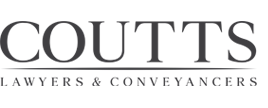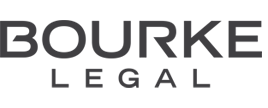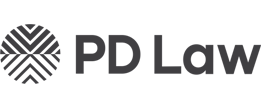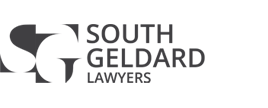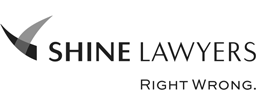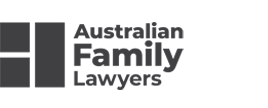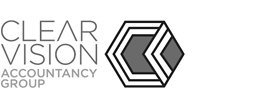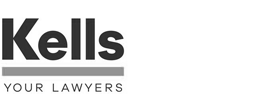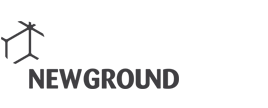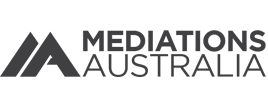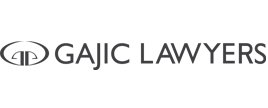We elevate law firm success through comprehensive branding solutions, offering expertise in market research, strategic planning, brand development, creative design, and implementation.
At Practice Proof, we specialise in law firm marketing, bringing a wealth of experience and a proven track record to the table. Our expertise spans across various legal markets, both in Australia and internationally, catering to law firms of all sizes, from emerging startups to established national practices. Our role in our clients’ growth stories is significant and multifaceted, involving a range of services tailored to the unique needs and goals of each firm.
We take pride in the longevity of our client relationships, a testament to the trust and satisfaction they place in our services. Many of our clients, we’re proud to say, have been with us for many years, reflecting our commitment to not just meeting, but exceeding their expectations. Our approach is not just about immediate results, but about sustainable growth and building a solid foundation for future success.
Our services are diverse and comprehensive, encompassing everything from digital marketing and SEO to brand development, strategic planning, and beyond. We understand the intricacies of the legal market and the importance of a nuanced, sophisticated marketing strategy that resonates with the target audience while upholding the professionalism and integrity of the law profession.
At Practice Proof, we’re not just a service provider; we’re a partner in your firm’s journey to growth and success. We’re dedicated to staying ahead of the curve, leveraging the latest tools and techniques to ensure our clients stand out in a competitive landscape. Let us help you take your practice to the next level and achieve the recognition and results you deserve.
Definition of brand collateral
Brand collateral encompasses all of the physical and digital materials, goods, and creative media used to amplify and support a brand’s identity. Key components may include logos, business cards, letterhead, signage, packaging, website design, social media graphics, brochures, videos, product branding, and more. These components are essential in targeting guests and expressing the brand’s story, personality, values, and promise.
Brand collateral plays a crucial role in establishing and reinforcing a brand’s identity in the minds of consumers. Consistent and well-crafted brand collateral helps to create a cohesive and memorable brand experience, build trust and credibility, and differentiate the brand from its competitors. It also serves as a tool to communicate the brand’s mission, vision, and values, creating a deeper connection with its target audience.
In today’s digital age, brand collateral has become even more significant as it serves as the face of the brand across various platforms and touchpoints. It is through brand collateral that the brand can visually and emotionally engage with its audience and leave a lasting impression. Overall, brand collateral is an essential aspect of brand building and should be carefully crafted to reflect the brand’s identity and resonate with its target audience.
Importance of brand collateral for law firms
Brand collateral is essential for law firms as it plays a crucial role in creating a professional brand image. It includes visual elements such as logos, business cards, letterheads, and brochures that convey the firm’s professionalism and credibility to potential clients. Additionally, brand collateral communicates the value proposition of the firm, highlighting its unique selling points and the benefits of choosing its services over competitors.
Having professional and consistent brand collateral helps to build trust and confidence in the firm, ultimately leading to more closed deals and increased return on investment (ROI). When used effectively, brand collateral can be integrated into the sales conversation, providing a visual representation of the firm’s expertise and capabilities. This consistency in messaging and branding reinforces the firm’s professional image and value proposition, ultimately enhancing its ability to attract and convert clients.
In summary, brand collateral is a powerful tool for law firms to establish a professional brand image, communicate their value proposition, and ultimately close more deals while increasing ROI. By integrating it into the sales conversation, law firms can create a consistent representation of their brand and reinforce their messaging, ultimately leading to more successful client engagements.
Understanding Your Target Audience
Understanding your target audience is crucial for any business or organization looking to effectively reach and engage with their customers or stakeholders. By gaining insightful knowledge about the demographic, psychographic, and behavioral traits of your audience, you can tailor your products, services, and marketing strategies to resonate with their needs and desires. This deeper understanding can also help you to create personalized and relevant messaging that can better drive conversion and loyalty.
Identifying potential clients
The potential clients we want to target are adults aged 25-65, with a middle to high-income level, who have legal needs in areas such as family law, estate planning, and small business law. These clients are likely to be professionals, entrepreneurs, and parents who value high-quality legal services. They may have specific legal needs related to marriage, divorce, child custody, wills, trusts, and business contracts.
These clients are busy and value convenience, so they may prefer communication methods such as email, phone calls, and virtual meetings. They may also appreciate a law firm that offers online document management and electronic signature capabilities.
The characteristics of our potential clients include being tech-savvy, time-conscious, and seeking personalized attention from a legal service provider. They may value transparency in pricing and billing and seek a trusted advisor who can provide practical and efficient legal solutions.
In summary, our target clients are middle to high-income adults with specific legal needs who value convenience, personalized attention, and efficient legal solutions. They are likely to prefer communication methods such as email, phone calls, and virtual meetings for their legal services.
Defining target audience demographics and psychographics
Defining target audience demographics and psychographics is a crucial step in any marketing or advertising campaign. By understanding the characteristics and behavior of your target audience, you can tailor your messaging and content to effectively reach and engage with them.
Demographics refer to the quantifiable statistics of a population, including age, gender, income, location, education, and occupation. These characteristics can help narrow down a target audience and understand their basic traits.
On the other hand, psychographics delves deeper into the psychological and emotional factors that drive consumer behavior. This includes their values, attitudes, lifestyle, interests, and personality traits. Understanding psychographics can provide valuable insights into the motivations and preferences of your target audience.
Combining both demographics and psychographics can give you a comprehensive understanding of your target audience. For example, knowing that a majority of your audience is young professionals living in urban areas (demographics) who value sustainability and are passionate about outdoor activities (psychographics) can inform your marketing strategy to focus on eco-friendly and outdoor related products or experiences.
In addition, defining target audience demographics and psychographics can also help with market segmentation, allowing you to tailor specific messages and products to different groups within your overall audience.
Ultimately, the more you know about your target audience, the better you can connect with and appeal to their needs and desires. Utilizing demographics and psychographics can help you create more personalized and relevant marketing strategies that resonate with your audience and drive better results for your business.
Tailoring brand collateral to target audience
To tailor brand collateral to target a specific audience, start by identifying the demographic, interests, and needs of the audience. Conduct thorough research to understand their preferences, behavior, and values. Use this information to create brand collateral that resonates with them. For example, if the target audience is young professionals interested in sustainable living, use channels such as social media platforms like Instagram and LinkedIn to reach and engage with them.
Create brand collateral that includes eco-friendly messaging, sleek designs, and practical solutions to their sustainability needs. When creating content, consider their need for convenience and efficiency, and ensure that the brand collateral addresses those needs. By understanding the audience’s demographic, interests, and needs, and using the right channels to reach and engage with them, the brand collateral can be tailored in a way that truly connects with the target audience.
Types of Brand Collateral
Brand collateral is an essential part of any organization’s marketing strategy, encompassing the various tangible items that help to promote and communicate the brand. From business cards to brochures, these elements play a crucial role in creating a consistent and memorable brand presence. In this article, we will explore the different types of brand collateral and their significance in shaping a company’s identity and marketing efforts.
Business cards
A business card should include essential elements like the company name, logo, and contact information such as phone number, email address, and physical address. These are vital for making a lasting impression and ensuring potential clients and contacts can reach you easily. In the digital age, it’s also important to offer the option of going digital with contactless business cards. One way to do this is by utilizing QR codes on your physical business card, which can be scanned to quickly save your information to a contact’s phone. Additionally, platforms like LinkedIn and other networking apps offer the ability to share digital business cards, which can include all the essential information and be easily shared with a simple click.
By including these sharing options, you can ensure that your information is readily accessible and that you stay connected with potential clients and contacts. Whether traditional or digital, business cards provide a professional and convenient way to share your company’s information and make a lasting impression.
Marketing materials
Law firms can utilize a variety of marketing materials to present themselves to potential clients, both through traditional print materials and online marketing efforts. Traditional print materials such as business cards and brochures can help law firms establish a physical presence and create a strong first impression. These materials can be easily distributed and provide potential clients with tangible information about the firm’s expertise and services.
However, print materials can be costly to produce and may not reach a wide audience.
In terms of online marketing, law firms can create podcasts and blog posts to showcase their knowledge and expertise in their respective practice areas. These materials can reach a larger audience and can be easily shared across various online platforms. However, creating high-quality content can be time-consuming and may require additional resources.
Overall, a combination of both traditional print materials and online marketing efforts can be beneficial for law firms to reach potential clients. By utilizing a mix of marketing materials, law firms can establish a strong brand presence and attract a diverse range of clients.


